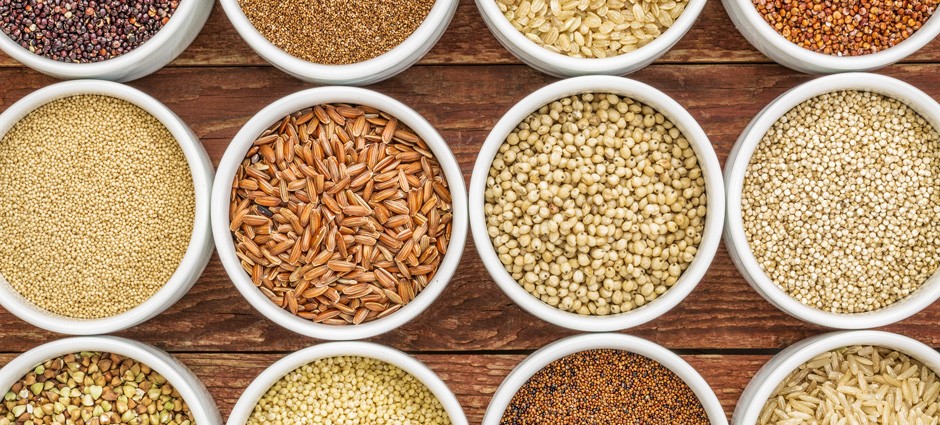Stroll down the aisles of any grocery store, and it may seem the whole world has gone gluten-free. The ubiquitous gluten-free label has even been slapped on products, like tea or fruit, that never did contain gluten. This recent backlash against gluten has left many consumers wondering what’s so bad about it and if they should avoid it, too. The answer is not a simple one.
Gluten is a protein found in grains such as wheat, rye, barley and hybrids of these grains, and it’s what gives elasticity to dough and chewiness to finished products, like crackers. It’s in many common foods, including obvious ones like pasta and bread and not-so-obvious ones like soy sauce and beer.
You may be equally as surprised to know that products like granola can be gluten-free too.
The rub is that not everyone’s digestive system is able to handle gluten. An estimated 1 in 133 people in the United States have celiac disease (a gluten-triggered autoimmune condition), while other estimates have put this number at 1 in 100. Another estimated 6 percent of the population (about 18 million people) experience non-celiac gluten intolerance or gluten sensitivity, according to research from the Center for Celiac Research & Treatment in Boston. And, Cynthia Kupper, RD, and executive director of the Gluten Intolerance Group (GIG) suggests the numbers could be as high as 24 million people in need of a gluten-free diet for medical reasons, even if they haven’t had a formal diagnosis. “We don’t know for sure how many people are self-diagnosing,” she says. “They may be self-diagnosing because they can’t get a doctor to listen.”
The gluten-free market was valued at around $2.7 Billion in U.S. sales in 2018, according to ResearchandMarkets.com. With the market expected to more than double by 2025, it’s safe to say that gluten-free is not a fad but a growing trend that is here to stay. But with many people unnecessarily piling on the gluten-free bandwagon, it’s important to understand the reasons to choose a gluten-free diet—and the reasons not to.
REASON ONE: CELIAC DISEASE
The primary reason to choose a gluten-free diet is celiac disease. “Celiac disease is an autoimmune condition in which you have a genetic component from a parent that has been activated. Once it’s been activated, it can’t go away and there is no cure except to not eat gluten,” Kupper says. When a person with celiac eats gluten, the body literally attacks itself. Chronic inflammation increases, causing the intestines to malfunction, which in turn can lead to malnutrition and other consequences, including an increased instance of cancer. To diagnose celiac disease, your doctor will need to do a blood test and a gut biopsy.
Celiac sufferers must adopt a no-tolerance policy, including avoidance of skin-care products that contain gluten and cross-contaminated foods (where trace amounts of gluten attach themselves to non-gluten foods, often via shared cooking surfaces and utensils or in food-production facilities).
WHAT TO WATCH FOR
Be on alert for these common symptoms, as identified by the Center for Celiac Research & Treatment.
CELIAC DISEASE
• Gastrointestinal issues: diarrhea, constipation, weight loss, abdominal pain, chronic fatigue, weakness and malnutrition.
• Osteoporosis
• Arthritis or joint pain
• Anemia
• Bleeding
• Infertility
• Depression, dementia or behavioral changes
• Failure to grow or gain weight (especially in children)
REASON TWO: GLUTEN INTOLERANCE
Gluten-intolerance symptoms can be similar to celiac disease, but the actual effect on your body resembles lactose intolerance: Gluten irritates your system and you have an adverse reaction to it, such as diarrhea, but it is not life threatening, Kupper explains. If a person who is gluten intolerant eats gluten, there is not an autoimmune reaction or a long-term effect on the intestine as there is with celiac disease. You can still eat gluten, knowing you might get a stomachache or feel ill afterward. Also, gluten intolerance can compromise the immune system, so it is still wise to follow a gluten-free diet if you’re sensitive to gluten.
Experts are unsure why gluten intolerance is more prevalent than it used to be, but some speculate that we have damaged our gut flora through the intake of sugar, alcohol, antibiotics, environmental toxins and even GMOs. This is why experts emphasize not just removing gluten from your diet but also eating more plant foods and examining your nutritional intake as part of going gluten-free.
WHAT TO WATCH FOR
Be on alert for these common symptoms, as identified by the Center for Celiac Research & Treatment.
GLUTEN SENSITIVITY
• Gastrointestinal issues: diarrhea, bloating, cramping, abdominal pain or constipation
• “Foggy mind,” depression or ADHD-like behavior
• Anemia
• Joint pain
• Osteoporosis
• Leg numbness
REASON THREE: WHEAT ALLERGY
Other people have an actual allergy to the proteins found in wheat. This can cause an anaphylactic reaction and difficulty breathing, making it potentially life threatening, as with peanut or shellfish allergies. “Wheat allergy, or allergy to other grains, is another distinct medical problem,” says Scott Sicherer, MD, a researcher at the Jaffe Food Allergy Institute at Mount Sinai in New York and author of Food Allergies (Johns Hopkins, 2013). “Like celiac disease, the immune system is involved but in a different way.”
Symptoms may include hives, swollen lips, breathing troubles and vomiting, occurring very soon after the food is ingested. Wheat allergy, like other food allergies, is diagnosed by skin or blood testing. But, he says, many people with a positive wheat allergy test can eat wheat without symptoms. “So wheat allergy is diagnosed based on expected symptoms and a positive test,” he explains.
WHAT TO WATCH FOR
Be on alert for these common symptoms, as identified by the Center for Celiac Research & Treatment.
WHEAT ALLERGY
• Breathing disorders, including anaphylaxis or difficulty breathing
• Nasal congestion
• Nausea
• Cramps
• Skin rashes or hives
• Migraine headaches
WHEN NOT TO AVOID GLUTEN
If you don’t test positive for any of the above conditions, there’s no medical reason to go gluten-free. Most people can benefit nutritionally from minimizing refined flours, but gluten-free diets aren’t automatically healthier. In fact, according to Kupper, gluten-free diets tend to be lower in B vitamins, calcium, iron and other nutrients that are critical for good nervous-system health, skin, hair and even cognition. “You could actually be making your diet worse if you don’t need to be gluten-free,” she says.
To boot, to make up for the texture and flavor changes that result from removing gluten, many gluten-free products have larger amounts of sugar and fat in them than their conventional counterparts. Be sure to look for products that do not list sugar or fat high on the ingredient list. “An allergen-free food is not necessarily a good quality choice. It can be free of allergens but also free of any good nutrients,” says Ashley Koff, RD, and author of Recipes for IBS (Fair Winds, 2007).
GOING ON A GLUTEN HUNT
To discover if a product has gluten, you’ll need to learn to read labels. “Many products help by identifying what they are ‘free’ of,” Koff says. Look for products certified gluten-free from an organization such as Quality Assurance International (QAI) or Gluten-Free Certification Organization (GFCO). For a product to be certified glutenfree, all the ingredients need to be gluten-free, and any ingredient that has been processed to remove the gluten protein must be tested and show a
lower than 20 parts per million level of gluten. With this in mind, know that a gluten-free product could still contain traces of gluten.
Because of the challenges of ferreting out gluten in your diet, it’s important to work with a practitioner if you have celiac disease or a gluten sensitivity, Koff says. Find a doctor or naturopath who can help you ensure that the products you’re eating are safe and nutritious so
you can actually heal your system.
The easiest way to avoid allergens, Koff says, is to eat whole foods, unprocessed in the form in which they are found in nature. “Then you just have to know the name of the allergen [you’re trying to avoid] and the few different forms it comes in,” she explains. Where it gets tricky, she says, is with packaged products. “Read the entire label, especially on supplements or protein powders; often the ‘inactive’ ingredients can contain the allergen,” she says.
Sicherer suggests avoiding foods that say “may contain” or “made in a facility that also processes” the allergen you are trying to avoid, especially if you have celiac disease or a wheat allergy. If you’re
unclear, he recommends calling the company.
At first, finding nutritious, gluten-free products may seem a daunting endeavor, but before long you’ll likely discover a new appreciation for whole foods and find healthy substitutes for old favorites.
LEARNING LABEL-ESE
“Gluten” has not traditionally been a term that you would see in an ingredient list. Even now, you usually only see the term “gluten-free” on a label; otherwise gluten is most often listed as “wheat,” which you’ll find not only in flour-based products like pasta and cookies, but also in foods like licorice and soups—items that aren’t so obvious.
What to avoid:
• Couscous
• Barley
• Bulgur
• Spelt
• Semolina
• Kamut
• Rye
• Malt
• Farina
• Farro
• Durum
• Seitan
• Brewer’s yeast
• Oats (unless they say “gluten-free” they are usually cross-contaminated)
• Modified food starch
• Starch
• Dextrin



